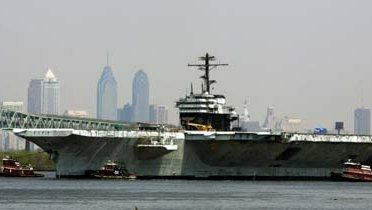Add energy research to the list of arenas in which Team Obama has recognized the power of regional economies to deliver innovation as well as economic growth.
On Friday, the Obama administration announced that no less than seven federal agencies were issuing a combined funding opportunity announcement of up to $130 million over five years to turn one of the Department of Energy’s energy innovation hubs into a true regional innovation center.
Centered on the second of DOE’s three energy research hubs, the new Energy Regional Innovation Cluster (E-RIC) initiative is noteworthy because it shows the administration moving to supplement a narrower research and technology program (focused on energy efficient building design) with a multi-agency array of offerings intended to broaden the effort and embed it in the powerful currents of regional innovation networks. In that fashion, the $22 to 25 million a year hub effort to develop and commercialize new building efficiency technologies will now be leveraged and better connected because it will be complemented by additional money from the Economic Development Administration, the Department of Commerce’s Manufacturing Extension Partnership, the Small Business Administration, the National Science Foundation, the Department of Labor, and Department of Education–all aimed at accelerating new technologies’ progress into the private economy.
This all-hands-on-deck broadening will be good for energy research and good for national economic discussions.
From a scientific point of view, the new regional and interagency emphasis of the E-RIC building sciences hub very appropriately broadens the relatively narrow, top-down science focus of at least one of the DOE’s hubs and gives it a collaborative, interdisciplinary flavor oriented toward the regional industry cluster in which it will be situated. That addresses a shortcoming of the DOE program and provides a new experiment more in line with the vision articulated by the Metro Program’s paper “Energy Discovery-Innovation Institutes: A Step Towards America’s Energy Future” as well as the energy centers called for the Waxman-Markey climate bill. That regional economic growth is now officially added to the hub’s mission is even better.
As to broader national economic policy, the approach on display in the announcement of the building science hub represents one more indication that the Obama administration and increasingly others in Washington are beginning to recognize the powerful mediating role of place in economic policy. Clusters, as we’ve noted previously, are a fundamental fact of the national economy, and a critical accelerator of innovation. It’s an excellent development therefore to see the implementation of the building science hub steered toward a true recognition of that reality.
The Brookings Institution is committed to quality, independence, and impact.
We are supported by a diverse array of funders. In line with our values and policies, each Brookings publication represents the sole views of its author(s).






Commentary
Energy Hubs + Regionalism = A New Vision for Innovation and Jobs
February 16, 2010